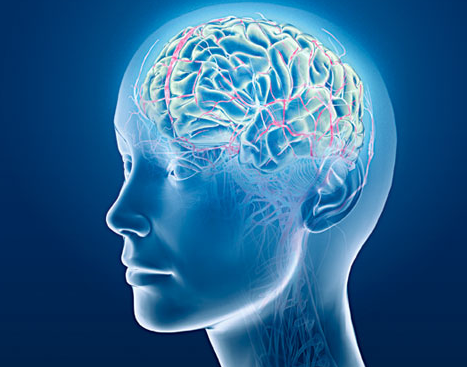When something goes wrong with your body, doctors usually have to put things back together,
当你的身体出现问题时,医生通常不得不把东西放回一起,
like by stitching a wound or setting a broken bone. But sometimes, healing your body requires taking it apart—
比如缝合伤口或接骨。但有时,需要把它分开——
like when you have to get an infected appendix removed—And that's true for the brain, too.
就像你必须去除被感染的阑尾一样,大脑也是如此。
For some people with certain psychiatric or neurological diseases, the best way to fix the brain is to damage it.
对于某些某些精神或神经疾病患者来说,修复大脑的最好方法就是破坏它。
Just really, really carefully. Surgery for brain conditions has a messy history.
真的,真的得认真,大脑手术的历史。
Unregulated lobotomies where doctors would essentially cut off the brain's frontal lobe to "cure" things
医生会利用未调节的额叶切除术通过切断大脑额叶来“治愈”疾病。
like schizophrenia were widespread in psychiatric hospitals across the US in the 1940s and ‘50s.
就像20世纪40年代和50年代美国精神病医院普遍存在的精神分裂症一样。
At the time, the procedure was crude and often left people lethargic, with a dulled personality, and unable to function on their own.
当时,这种手术还不是很成熟,患者做完手术常常感觉昏昏欲睡,反应迟钝,无法自主工作。
Thankfully—like, really thankfully—we know a lot more about the brain now than we did back then,
谢天谢地,现在我们对大脑的了解比以前多得多,
and our technology has gotten better as well.
技术也更加纯熟。
Today, surgery for neurological and psychiatric conditions is a lot more specific and targeted.
今天,神经和精神疾病的外科手术更加明确具体,治疗上更有针对性,
It's also much safer, and really only used when other treatments, like medication, don't work.
也更安全,而且只在其他治疗方法(如药物)不起作用时才加以使用。
One of these surgeries is the corpus callosotomy, also known as a split-brain surgery.
其中一个手术是胼胝体切开术,也被称为裂脑手术。
This procedure involves severing the corpus callosum, the band of nerves that connects the two hemispheres of the brain.
治疗过程包括切断胼胝体——连接大脑两半部分的神经带。
It's designed to help those with severe epilepsy when typical medications and treatments aren't working.
治疗对象是那些典型药物和临床治疗无效的重症癫痫患者。
Specifically, the surgery helps ease seizures, which are caused by abnormal electrical firing in the brain, from spreading from one hemisphere to the other.
具体而言,这种手术有助于缓解由脑中异常点火从一半扩散至另一半引起的癫痫发作。
It won't stop the seizures completely, but it will at least keep them confined.
它不会完全根治,但至少会限制发作频率。
And the good news is, it's effective. In a 2013 study in the journal Neurosurgery,
好消息是,这种治疗是有效的。2013年发表在《神经外科》杂志上的一项研究中,
50 people who went through the procedure had a statistically significant drop off in the frequency and severity of seizures.
据统计,50名接受该手术的患者癫痫发作的频率和严重程度均有所下降。
And the outcomes were even better if they had the procedure done when they were younger.
如果他们在年轻时完成手术,结果会更好。
Also importantly, this surgery helps reduce atonic or drop seizures:
重要的是,这种手术有助于减少张力或癫痫发作:
seizures where the person loses control of their muscles and falls to the ground, putting them at risk for injury.
癫痫发作时,患者会无法控制肌肉,摔倒在地,有受伤危险。
We don't really know why they happen, but corpus callosotomys reduce their frequency.
我们不知道为什么会发生这种症状,但是胼胝体减少了发症频率。
That 2013 study found that 40% of the patients had no more drop seizures after the surgery, and 64% had the frequency reduced.
2013年,一项研究发现,术后40%患者的癫痫症不再发作,64%的患者癫痫发病率降低。
And in a 2014 study of 26 patients in the journal Epilepsy & Behavior, drop attacks went down by half or more in 65% of patients.
2014年发表在《癫痫与心电图》杂志上的一项针对26名患者的研究表明:65%患者的发病率降低了一半或者更多。

Now, there are side effects and risks to the procedure, like headaches, stuttering or other trouble with speech, and coordination problems.
如今,这种手术有副作用和风险,比如头痛、口吃或其他语言障碍,以及协调问题。
But reducing seizures typically improves quality of life dramatically, so for some patients, it makes the most sense.
但癫痫发病率的减少通常会显著改善生活质量,因此对一些患者来说,这是最有意义的。
Surgery is also used to treat severe cases of obsessive compulsive disorder, or OCD, which causes recurrent,
外科手术也用于治疗重症强迫症,这种病会复发、
intrusive thoughts and repetitive behaviors.
影响人的思想和做出重复性行为。
Scientists are increasingly confident that the neurological root of the disorder is a small hook of tissue towards the front of the brain called the anterior cingulate cortex.
科学家们愈加相信,这种神经疾病的根源来自大脑前部的一个叫做前扣带皮层的小钩。
This region, also called the ACC, is involved with the regulation of emotion.
这个区域,也被称为前扣带脑皮质,与情绪调节有关。
It serves as a connector between the brain's limbic system, which deals with emotions, and the prefrontal cortex, which handles cognitive control.
它连接着大脑边缘系统(处理情绪)和前额皮质(处理认知控制)。
In OCD, the ACC is hyperactive. So people whose OCD isn't treatable with medications or therapy sometimes undergo surgery to try and modify its activity.
在强迫症中,前扣带脑皮质极为活跃。因此,强迫症患者不能通过药物或疗法进行治疗,有时需进行手术,尝试改变其行为。
One way to do this is by using deep brain stimulation, or DBS:
一种治疗方法是进行脑深层刺激手术——
a procedure that places a small electrode inside the brain by the target brain region.
将一个小电极按目标大脑区域放置在大脑内部。
The electrode sends out pulses to disrupt abnormal activity in that region and restore normal patterns,
电极发出脉冲干扰该区域的异常活动并使其恢复至正常模式,
and multiple studies have shown that it helps manage symptoms.
多项研究表明,脑深层刺激手术能有效控住症状。
From what we can tell, it's also safe in the long term, according to a follow up study on six patients published in 2016 in PLOS One,
根据2016年发表在《公共科学图书馆·综合》上的一项针对6名患者的后续研究,从长远来看,该手术也是安全的,
and it improves the quality of life for patients.
能提高病人的生活质量。
Like all brain surgeries, it does come with its side effects, like headaches or lightheadedness,
和所有的脑部手术一样,脑深层刺激手术也会带来副作用,比如头痛或头晕,
but many of them can be managed by adjusting the frequency and strength of pulses.
但大多可以通过调整脉冲的频率和强度来控制。
Finally, deep brain stimulation is also used to treat Parkinson's,
最后,脑深层刺激手术也用于治疗帕金森氏症,
to help ease the tremors and movement problems characteristic of the disease.
帮助缓解患者的颤抖和活动问题。
Many Parkinson's symptoms are caused by the death of neurons in the brain that produce the neurotransmitter dopamine.
许多帕金森氏症的症状是由大脑中产生神经递质多巴胺的神经元死亡引起的。
Dopamine regulates several pathways in the brain, including ones involved in movement.
多巴胺调节大脑中的各个通路,包括活动的通路。
So without enough of it, multiple brain regions become overactive.
因此,如果多巴胺减少,多个大脑区域就会变得过于活跃。
To treat symptoms, surgeons will sometimes cut or burn out those regions,
为了治疗这些症状,外科医生有时会切除这些区域,
but deep brain stimulation is safer and more easily adjusted,
但是脑深层刺激手术因其更安全,更易于调整,
so it's become the preferred procedure.
所以成为治疗首选。
DBS can't replace that lost dopamine or anything, but like with OCD, it can help normalize brain activity by stopping those extra signals.
脑深层刺激手术无法更换失去的多巴胺或任何事物,但就像强迫症一样,它可以通过阻止这些额外的信号来恢复大脑的正常活动。
And it seems to work. A 2014 meta-analysis of six trials, which included over 1000 patients,
这似乎很有效。2014年的一项荟萃分析对6项试验进行了分析,其中包括1000多名患者,
found that it significantly improved motor signs of Parkinson's, functionality, and quality of life.
发现它能显著改善帕金森病的运动症状、功能和生活质量。
And similar results have been replicated in more recent studies, too.
最近的研究结果也与此类似。
All this goes to show that, even if the brain is a unique and special part of the body, it's also just another organ.
所有这些都表明,即使大脑独一无二,它也只是我们身体的一个器官。
Sometimes, diseases and disorders make it work against you, and surgically changing it can be the best way to heal.
有时疾病使身体不受我们控制,手术可能是最好的治疗方法。
Thanks for watching this episode of SciShow Psych! If you'd like to learn more about surprising neurological treatments,
感谢收看本期的心理科学秀。如果你想了解更多关于神经治疗的知识,
you can watch our episode about — of all things — LSD.
可以观看我们关于LSD的节目内容。


